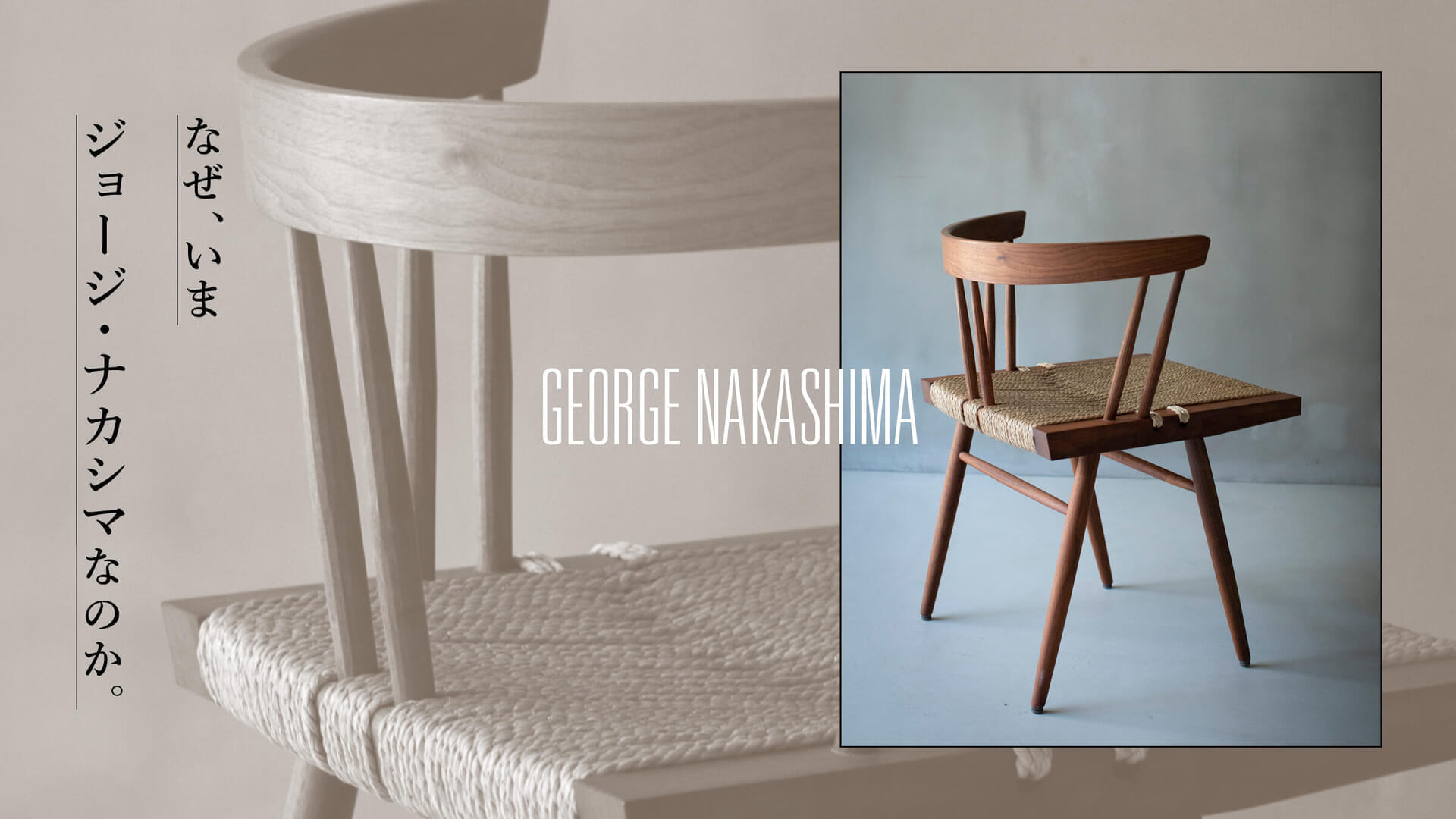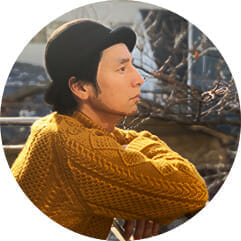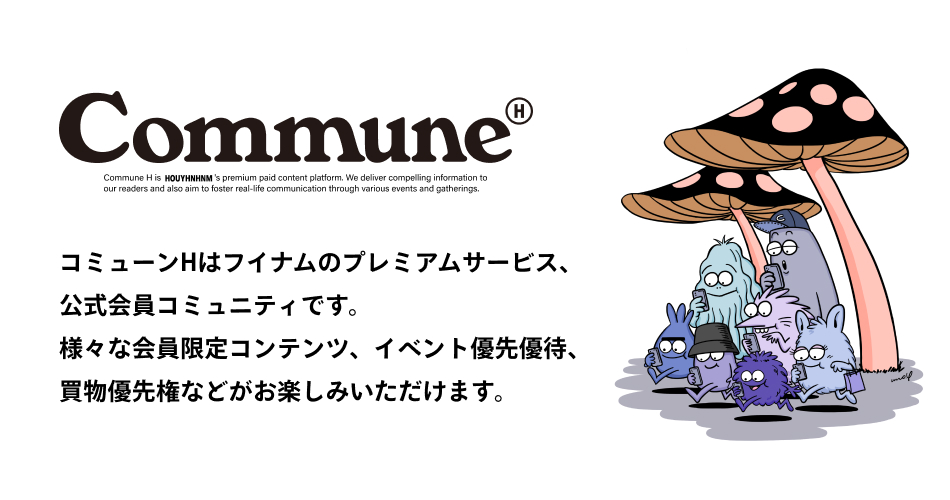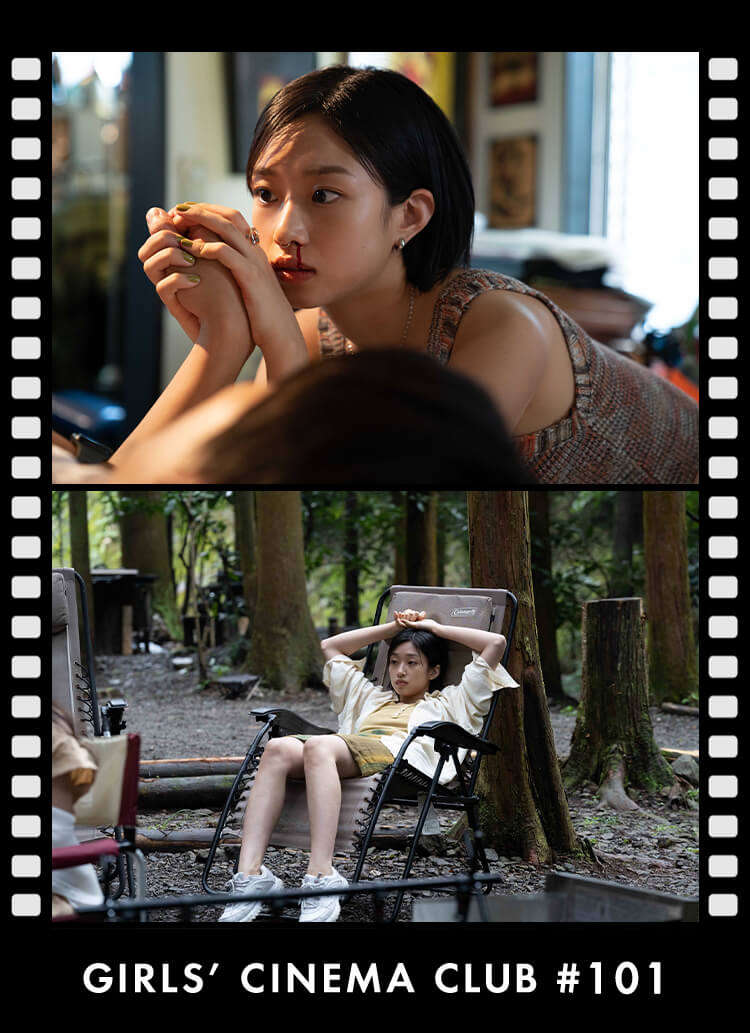. the difference from today's inexpensive furniture.
What is the beauty of George Nakashima's furniture as a product? I know that there are three different types of furniture, but let me borrow Mr. Mizuma's words, who actually uses his favorite furniture.
I live in a concrete apartment in Tokyo. I grew up in the countryside and love nature, but when I see George Nakashima's solid wood furniture in this inorganic space, I feel as if I am interacting with nature and plants. It is very pleasant.


Nature exudes from the furniture. At the same time, because of the dynamic use of wood, George Nakashima's furniture also exudes a sense of tension. However, once you sit down in a chair, you can feel the good feeling of being in the right place and your back naturally straightens up. This can be seen in Mr. Hattori's point of view as a designer.
." "In fact, when you sit in the chair, it's still wonderful. In one of his writings, there is a sentence that says that chairs are for healing the body, which is absolutely necessary for the function of chairs, and I think that this is similar to the absolute restrictions when making clothes, such as making holes for the hands, neck, and feet. I also like the fact that he thought of the chair as something for healing the body, rather than just a design or something cool.


milk house table Designed by George Nakashima in the early days of his career, circa 1944. The name "Milk House" is derived from the name of the cabin he rented on Raymond's farm. It was produced in a slightly smaller version for this exhibition.


Conoid lounge (rosewood model) The unusual two-legged chair was designed around 1980 and will be made of precious rosewood. Nakashima's work on this mold is also housed in the lounge of the Japanese Gallery in the Metropolitan Museum of Art in New York.
Modern inexpensive furniture tops are made of a single thin sheet of veneer, which cannot be repaired if scratched or otherwise damaged. Vintage furniture, on the other hand, is two to three centimeters thick and can be restored with some maintenance.
Mr. Nakashima says that naturally formed scratches and dents deepen the flavor of a piece of furniture, and I see what he means. George Nakashima's furniture is made of solid wood, and in the case of tables, if a scratch becomes noticeable and bothersome after 10 years or so, the tabletop can be shaved to restore the look of a new, solid piece of furniture. . Therefore, it should not be treated as something more expensive than it needs to be, and its appeal lies in its everyday use. After using it for a long time, I feel that it grows together with the furniture, such as the grain of the wood developing its flavor and the rushes changing nicely with age," says Mizukami.

Nakashima paper knife (ebony) Hard and lustrous ebony is used as a material for the first time.
Instead of buying new furniture every once in a while, we should use great furniture for a long time and pass it on to the next generation. And then pass it on to the next generation. Furniture by George Nakashima is perfect for such long-life use, and Nakashima's love of nature is alive and well in such use.









